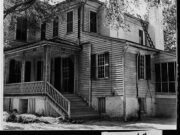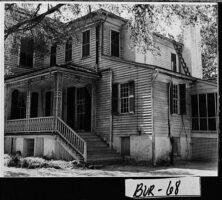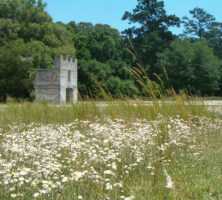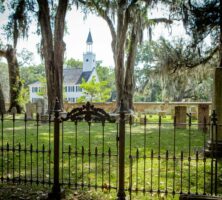Colonial Georgia witnessed a stark contrast between impressive town plans motivated by Enlightenment and philanthropic idealism and relatively limited architectural development hampered by economic hardships and a paucity of skilled craftsmen. Georgia developed along a unique trajectory compared with other states, with most early settlement and architectural development occurring within towns. Although few buildings remain from eighteenth-century Georgia, the town plan of Savannah and its urban progeny—Augusta, Brunswick, Darien, and New Ebenezer—attest to the lofty ambitions of James Edward Oglethorpe and the other Trustees.
Forts
Expected to protect the Carolinas from Spanish Florida, colonial Georgia witnessed a rapid proliferation of fortified architecture to guard its many coastal waterways. Most early forts were constructed of readily available wood and were square in plan, usually with small corner bastions, such as the first Fo rt Wimberly, erected at Wormsloe Plantation in the 1730s outside Savannah. By 1744, however, the wooden structure was replaced by a fort of tabby, the ruins of which still stand. Oglethorpe himself oversaw the construction of another tabby fort, Fort Frederica, on St. Simons Island in 1736. Its fragmentary remains, along with those of Fort Wimberly, are the oldest architectural fabric surviving in Georgia. At the northeastern corner of downtown Savannah stand the remains of Fort Savannah (later renamed Fort Wayne), whose brick walls and buttresses were erected by the British in 1779 to replace early colonial earthworks. Oglethorpe also commissioned a 90-foot-tall wooden lighthouse to be built at the mouth of the Savannah River on Tybee Island in 1736. Rebuilt in brick to a height of 100 feet in 1773 and subsequently enlarged, it remains one of the oldest functioning lighthouses in the country.
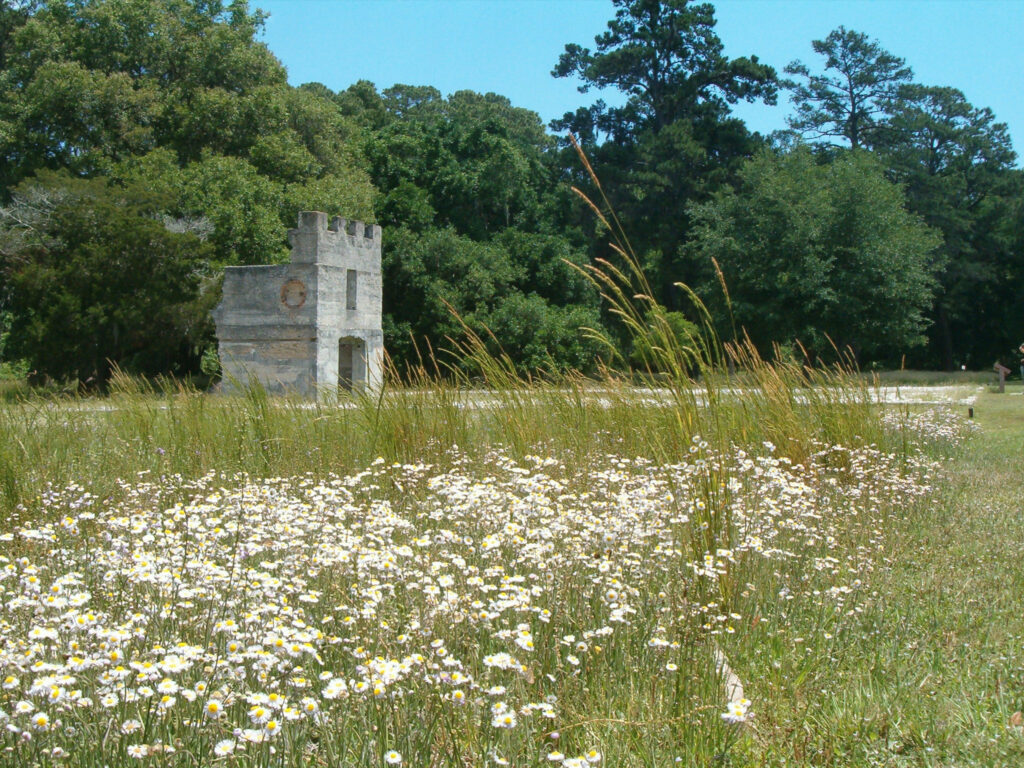
Image from UncleBucko
Houses of Worship
The importance of colonial Georgia as a haven from religious persecution ensured its prominent place in architectural history for houses of worship. The first structure established was Christ Church in Savannah in 1734, but various problems delayed its completion until 1750; it would be replaced in 1837 by the present Neoclassical church building. The Puritan meetinghouse at Midway, erected south of Savannah in 1756, was another significant work, but it was burned by the British during the Revolutionary War (1775-83). The walled cemetery is the only colonial-era structure of this significant community to survive. The meetinghouse was replaced by the Midway Congregational Church, which was completed in 1792. Its boxy simplicity and single steeple over the door followed the pattern of Palladian churches throughout the colonies. Jerusalem Church in New Ebenezer, a sober brick pile erected by Lutherans, alone survives from before the Revolution.
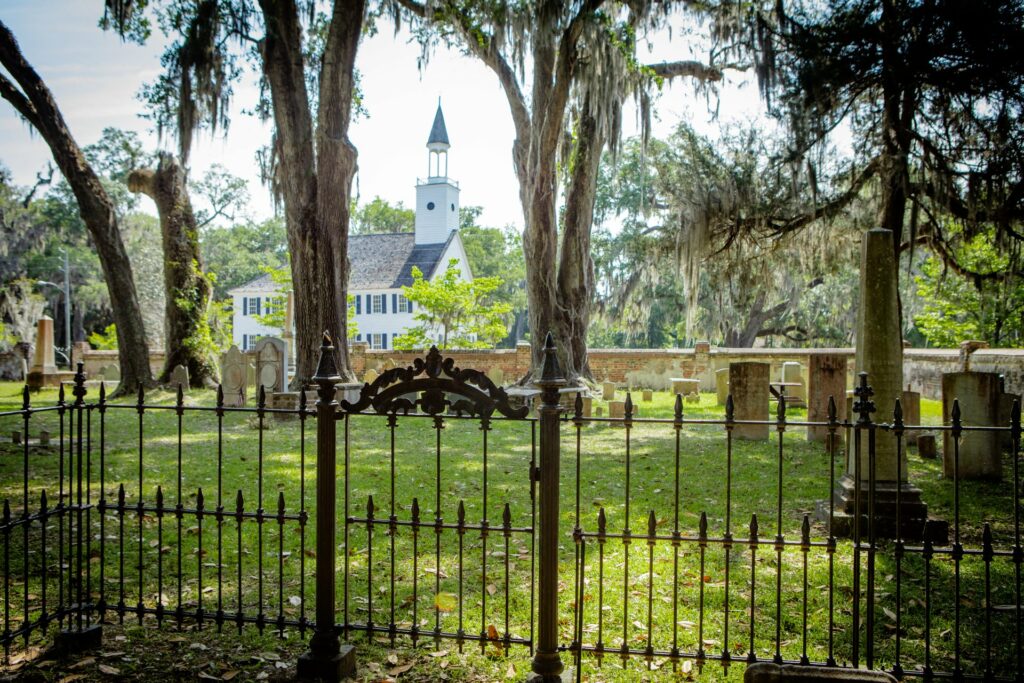
Courtesy of Explore Georgia.
Residences
The earliest houses in Georgia were modest, and occasionally, as in other states, such native building practices as making roofs with palm fronds were employed in their construction. Small one-story side-gabled houses, sixteen by twenty-four feet in size with a chimney at one end, in Savannah emulated the typical English yeoman’s cottage of the period. Many colonial houses in Georgia emulated the New England saltbox type, where the side-gabled roof extends at a gentler pitch above an attached rear shed. The Christian Camphor House in downtown Savannah, built between 1760 and 1767, illustrates this form and is likely the only colonial urban house still standing in Georgia.

Courtesy of Georgia Archives.
Outside the towns, log houses with a chimney at one end and floors of puncheons, or split logs roughly smoothed on one face, initially predominated. The doubling of such houses with a space, or breezeway, in the center where some early settlers kept their dogs led to the distinctive residential type known as “dogtrot” houses. A widespread residential form in Georgia is called the Plantation Plain style—a house set on a raised basement (typically of brick) and only one room deep, allowing each room to have windows on three sides. The side-gabled roof extended out in a gentler pitched shed roof over a front porch and sometimes also over a rear porch. Wild Heron Plantation House, possibly erected as early as 1756, follows a similar form, though it is two rooms deep. One of the most remarkable colonial buildings in Georgia was the Bethesda orphan house outside Savannah, commissioned by George Whitefield in 1740, with piazzas on four sides and an impressive hipped roof. Like so many of Georgia’s wooden colonial buildings, it was destroyed by fire in 1773.
Little physically remains of Georgia’s colonial architecture—sparse ruins of Forts Frederica, Wimberly, and Wayne; portions of the Tybee Lighthouse; the one church at New Ebenezer; and a few houses, like the Camphor House in Savannah and Wild Heron nearby. Limited resources and skilled labor restricted most construction to a modest character. This, however, did not prevent interesting experiments with such building materials as tabby, architectural forms like the dogtrot house, and town plans more impressive than found anywhere else in the colonies.


